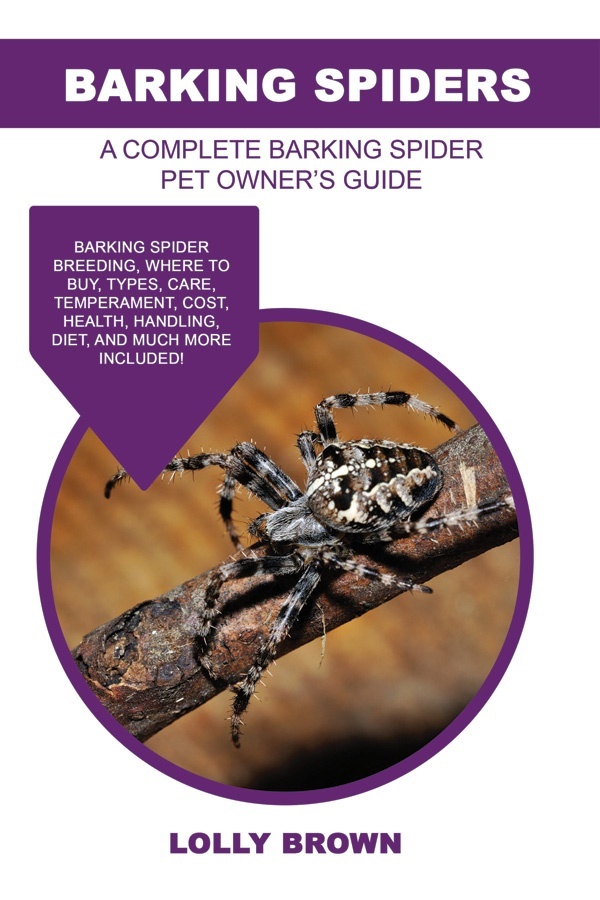CHAPTERS
Navigate to chapter
► Chapter 1: Understanding Barking Spiders
► Chapter 2: Things to Know Before Getting a Barking Spider
► Chapter 3: Purchasing Your Barking Spider
► Chapter 4: Caring for Your New Barking Spider
► Chapter 5: Barking Spiders Handling and Temperament
► Chapter 6: Feeding Your Barking Spider
► Chapter 7: Breeding Your Barking Spiders
► Chapter 8: Keeping Your Barking Spider Healthy
► Chapter 9: Barking Spider Care Sheet
Chapter 2: Things to Know Before Getting a Barking Spider

Any hobbyist, budding or otherwise, will want to find out how safe it would be to take in a barking spider before making a decision of bringing home one. When little was known about this tarantula species, the Barking Spider Tarantula was said to have very strong venom that would make a child, a small animal or an adult seriously ill.
Time, studies and experience beg to differ in this case; the barking spider can cause quite a punch of a bite if an individual is bitten by one. The spiders bite will manage to break the skin of a human being but its venom is not deadly as originally thought and is said to be comparable to the sting of a wasp.
However, there have been reports of larger barking Spiders who have bitten people who suffered severe illness, nausea and vomiting for up to six hours after being bit. It is best to stay clear of the barking spider, especially the large kind, if you are squeamish about the thought of getting bitten.
Aside from their fangs, the barking spider will also rub its abdomen with its hind legs so as to release fine hairs from its body. These fine hairs are a severe irritant not only to the skin but also to the mucus membranes.
Licensing systems aid in the protection of wildlife from aggressive exploitation as well as the negative impacts to species exotic to a particular region.
These controls ensure populations of wild plants and animals remain viable. These controls are also in place and should be heeded to help maintain the keeping, taking, using and transport of wildlife for recreational, commercial or other purposes under monitor.
That being said, it is illegal to collect some species from the wild. Barking spiders have been harvested from the wild in great numbers and are said to be threatened by illegal capture. It is best to only acquire a barking spider that has been bred in captivity to dissuade unscrupulous hunters from hunting them out of their habitat.
The hobbyist looking to take in a barking spider should check with their local animal or pet counsel to determine if owning a barking spider would need licensure in your state of residence. Even if state laws are quiet regarding pet spiders, it is advisable that you expand your research into local municipal, city, town, and even neighborhood rules because these might provide further regulations regarding pet spiders even when state law otherwise allows it. Make sure that you are not violating any of your state or local laws. You can find more information about spider licenses at:
<https://www.ehp.qld.gov.au/licences-permits/plants-animals/index.html>
How Many Barking Spiders Should You Keep?
A hobbyist may keep as many barking spiders as they like given that the hobbyist is mentally, physically, emotionally and financially prepared to care for each one of the spiders.
The keeper/hobbyist/arachnid enthusiast has to have sufficient space to house each one of the spiders, that the hobbyist is financially prepared and able to support and provide for all its needs, and that the hobbyist shall make time to check in, visit with and sit up with their new pet spider assortment. Tarantulas like the barking spider are cannibals and taming them from eating their own kind will be an exercise in futility because it is in their nature to chomp down on other spiders similar or not to them.
A hobbyist may keep a number of spider species in their care if they choose, but the spiders should all be housed in separate encasements to avoid attacks, fights and the untimely dining of one on another.
Regardless of what information you may gather about each species and how they treat each other, one can never be sure when it comes to individual spiders – particularly ones kept in captivity and in close proximity to each other. If you really are aiming to keep more than one barking spider or any kind of spider for that matter, make sure you have species-specific enclosures for each of them. Don’t attempt a communal setup unless you have done extensive research and have several years of experience in keeping and caring for these kinds of pet.
Do Barking Spiders Get Along with Other Pets?
The short answer would be, no. Keep in mind that tarantulas are cannibals and if a hobbyist decides to house a barking spider with other species, then one or more of these species will surely suffer.
Fights could break out at the very least. Worst case scenario would be the hobbyist coming in for a visit only to find the vivarium missing an occupant or two.
Continue Reading…
Want to read the entire thing?

